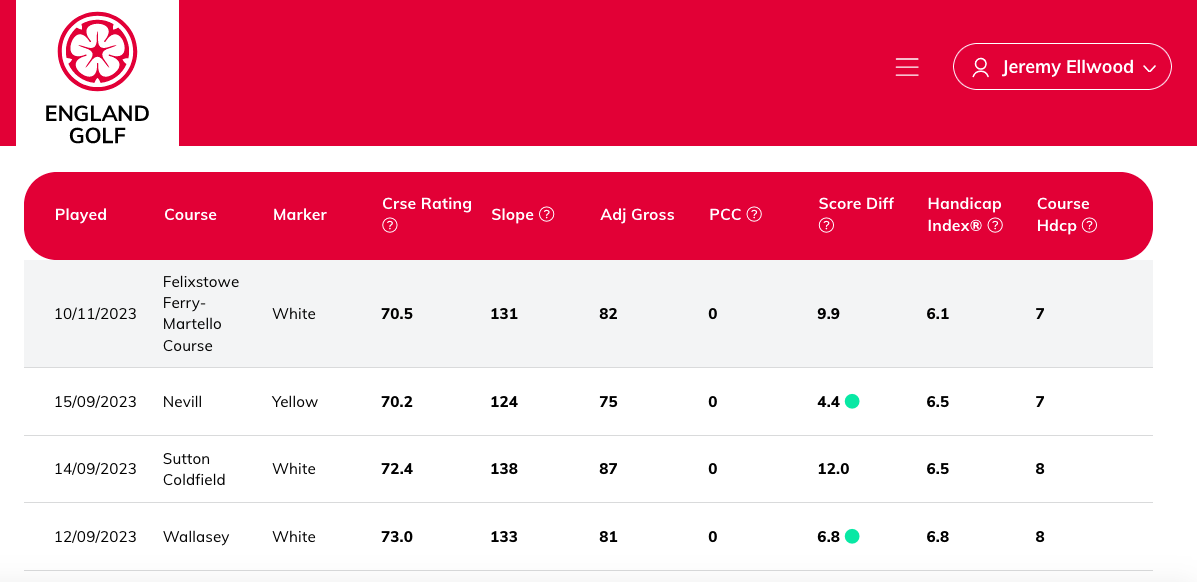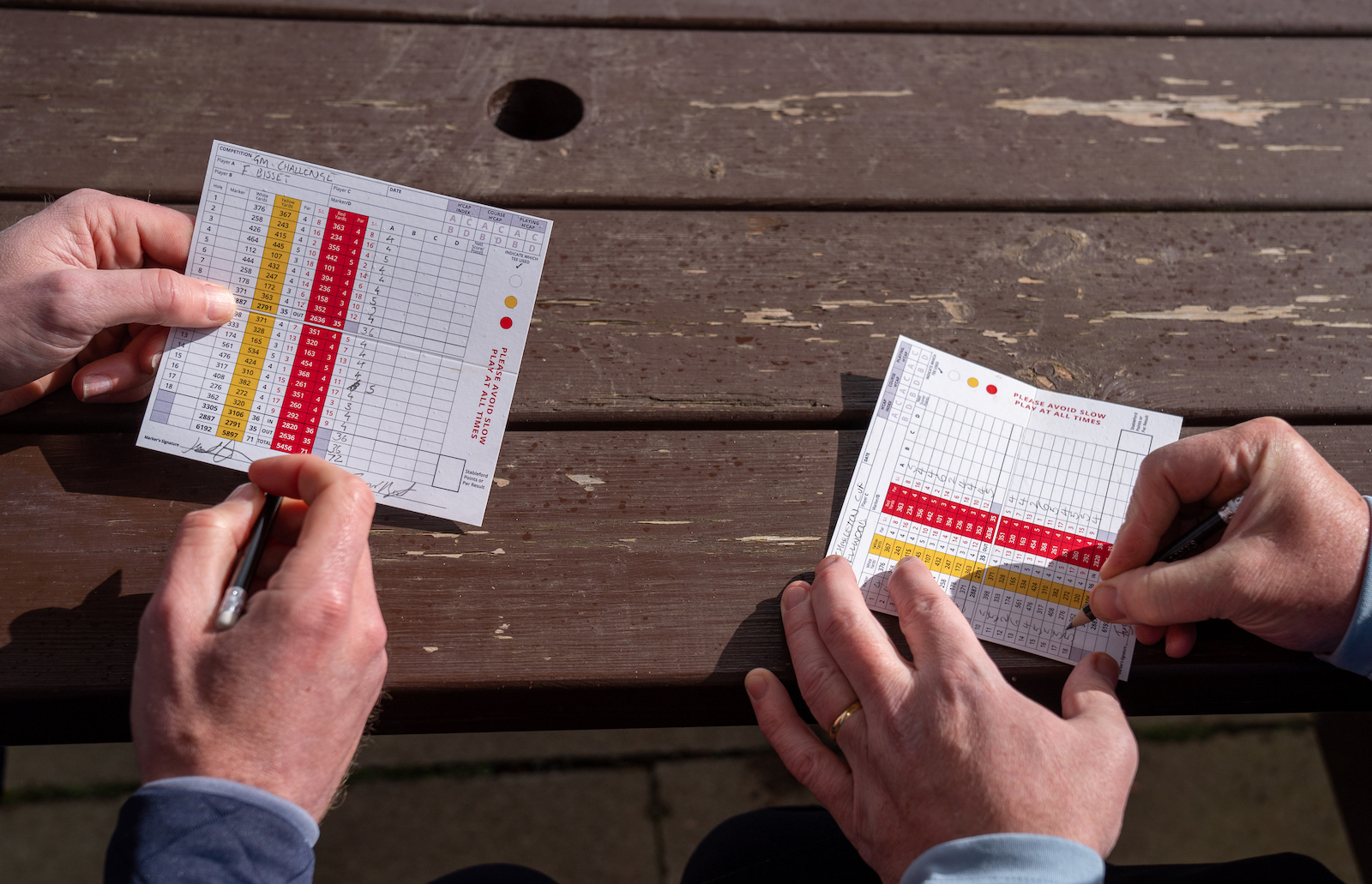6 Biggest Changes From The 2024 World Handicap System Revisions
We highlight and discuss some of the biggest changes to the WHS from 2024 as The R&A and USGA seek to further strengthen our handicap system


The World Handicap System (WHS) was launched in January 2020 and adopted in the UK & Ireland in November that year. Following a major transitional period while golfers adapted to how it operated relative to the previous handicap system, the initial dust has settled and it has been running relatively smoothly, with many initially sceptical golfers now more ‘sold’ on the concept.
Many, but not all, of course! A few gripes and uncertainties remain in some quarters about certain elements, sometimes legitimately, and sometimes perhaps from those who still don't understand how the system and its calculations really work.
Even disregarding for now any concerns over whether the Slope Ratings assigned to courses are universally consistent (we’ve all played somewhere and thought, “How on earth is that Slope Rating 140?”), it was always going to be virtually impossible to get everything spot-on first time, hence some changes from 2024 flagged up recently by The R&A and USGA.
In announcing several significant revisions effective from January 1, 2024, Claire Bates, director of handicapping at The R&A said: “We have made good progress in the early stages of the WHS but we know there are always areas that can be improved as we gather more data and information on the system from around the world. We will continue to work with the handicapping bodies and national associations to ensure that the WHS is providing golfers with a system that provides a sensible balance between inclusivity and integrity, making it as easy as possible to get a Handicap Index, subject to meaningful safeguards.”
These changes haven’t just been made on a whim either. With over 100 million scores posted each year in the 125 countries now using the WHS, there is a veritable wealth of data on which to draw in the quest for ever greater accuracy, consistency and equity. Here we summarise what we consider the most significant updates and offer our view on them.
More frequent 'Playing Conditions Calculation' adjustments
Most golfers in the UK&I were pleased when they learned there was to be a Playing Conditions Calculation (PCC) in WHS to kind of mirror how the old Competition Scratch Score (CSS) attempted to factor in unusually difficult or easy playing conditions. They have perhaps mostly been a little disappointed with how this has played out, and nearly all regular competitive golfers will at some stage have looked at their handicap record after a particularly testing day on the course and been baffled to see a PCC of zero!

The Playing Conditions Calculation should become more active from 2024
Nobody seems to really understands the algorithms or calculations by which it works, and while that seeming lack of transparency may not change, we are being assured that the 2024 revisions will increase the likelihood of a PCC adjustment, with revisions to the national associations’ computation platforms due to be completed by April 1, 2024. This should be a very welcome change.
Subscribe to the Golf Monthly newsletter to stay up to date with all the latest tour news, equipment news, reviews, head-to-heads and buyer’s guides from our team of experienced experts.
Use of an ‘Expected Score’ for a hole not played
While the playing of more competitive, handicap-counting nine-hole golf has been actively encouraged, there’s little doubt that the way WHS calculates an 18-hole Score Differential from a nine-hole round has been a bit of a disincentive. You can play a blinder for nine holes, but the system has thus far been set up to assume that, despite this, you wouldn’t have maintained that pace, with the second nine that is used to calculate your Score Differential simply net par plus one additional stroke for the first hole not played (i.e., 17 points in a Stableford format).
The full details are not yet known, but the system will now feature improvements to the method used to handle holes not played, which will now be based on your ‘Expected Score’ rather than net par, using an automated calculation personal to each player. ‘Expected Score’ will also be used to calculate an 18-hole Score Differential when not all 18 holes are played for a valid reason, but if you start a hole but don't complete it, that hole will still be scored as net double bogey for handicap purposes as now. This sounds like a good revision to us, which will hopefully encourage more nine-hole cards to be submitted.
Non-standard numbers of holes can be used for handicap purposes
A variation to Clause 3.2 in the WHS rules will allow the playing of handicap-counting rounds over a non-standard number of holes. This will mean handicap-counting competitions could now be played over 11, 13, 15 or any number of holes between nine and 18, with rounds of fewer than 18 holes scaled up to 18 using the new ‘Expected Score’ facility (see above).
So, if your course has a hole out of play for winter maintenance or improvement works, scores could still count for handicap purposes. Or, if your club plays shorter-length competitions or roll-ups (as mine does on Thursday evenings over 15 holes) those scores could count. There are also actually a surprising number of courses that have an unusual number of holes between nine and 18, so they could now play handicap-counting competitions over just the number of holes they physically possess if so desired.
This change, effective in the UK&I from April 2024, should provide scope for far more rounds to count for handicap.

It is hoped that the 2024 revisions will encourage more handicap-counting scores to be submitted
Changes to Course Handicap calculation
Again, from April next year there will be a change to the way in which a Course Handicap is calculated in the UK&I to bring us in line with many other WHS jurisdictions.
The current Course Handicap calculation is Handicap Index x (Slope Rating/113). From April 2024, the calculation will also factor in any difference between Course Rating and par (either way) to become Handicap Index x (Slope/113) + (Course Rating – par). So, if par is lower than Course Rating, you’ll get more shots on your Course Handicap, and vice versa.

From 2024, there will be a 'course rating minus par' adjustment when calculating Course Handicap
Proportionally, of course, this will help lower handicappers more as any ‘Course Rating minus par’ differences will be a bigger percentage of the result of the calculation than for higher handicappers, which may help a little to quell the age-old perception (false or otherwise!) that ‘higher handicappers win everything’. For example, if the existing calculation yielded a Course Handicap of 2 for a low-handicapper and 18 for a higher-handicapper, and the Course Rating was 1.5 higher than par, the lower-handicapper’s Course Handicap of 3.5 via the new calculation would represent a 75% gain and the higher-handicapper’s 19.5 just an 8.33% gain.
Shorter-length courses to be brought into the Course Rating system
The news that the overall course length requirements for Course Rating under WHS are to be significantly reduced is certainly good from an inclusivity perspective. The minimum length to be eligible for a Slope Rating and Course Rating for 18-hole courses is being halved from 3,000 to 1,500 yards and for nine-hole courses from 1,500 to 750 yards.
While this drive to expand the reach of WHS and enable more golfers to obtain and use a Handicap Index is admirable, it remains to be seen whether or not genuine parity and transferability can be achieved between courses of widely differing lengths. But there is perhaps more chance now than there would have been under the old handicap system.
Enhanced guidance on conducting a handicap review
Regular handicap reviews – at least once a year – are vital to ensure players’ Handicap Indices continue to reflect their ability. From 2024 there will be new reporting tools incorporated into handicapping software to assist committees in conducting and applying those handicap reviews more effectively and consistently.
These new tools seek to undertake the requirements of Appendix D in the Rules of Handicapping to identify players who are consistently scoring above, or below, their ‘expected’ scoring range or where other abnormalities within a player’s scoring record exist. If more clubs undertake to carry out handicap reviews as regularly and thoroughly as possible, that can surely only be a good thing for the effectiveness of the overall system.
There are a number of other changes, too, and those interested can find out more in The R&A’s and USGA’s new Rules of Handicapping from January 2024, where the principal revisions are highlighted on pages 10 and 11.

Jeremy Ellwood has worked in the golf industry since 1993 and for Golf Monthly since 2002 when he started out as equipment editor. He is now a freelance journalist writing mainly for Golf Monthly. He is an expert on the Rules of Golf having qualified through an R&A course to become a golf referee. He is a senior panelist for Golf Monthly's Top 100 UK & Ireland Course Rankings and has played all of the Top 100 plus 91 of the Next 100, making him well-qualified when it comes to assessing and comparing our premier golf courses. He has now played 1,000 golf courses worldwide in 35 countries, from the humblest of nine-holers in the Scottish Highlands to the very grandest of international golf resorts. He reached the 1,000 mark on his 60th birthday in October 2023 on Vale do Lobo's Ocean course. Put him on a links course anywhere and he will be blissfully content.
Jezz can be contacted via Twitter - @JezzEllwoodGolf
Jeremy is currently playing...
Driver: Ping G425 LST 10.5˚ (draw setting), Mitsubishi Tensei AV Orange 55 S shaft
3 wood: Srixon ZX, EvenFlow Riptide 6.0 S 50g shaft
Hybrid: Ping G425 17˚, Mitsubishi Tensei CK Pro Orange 80 S shaft
Irons 3- to 8-iron: Ping i525, True Temper Dynamic Gold 105 R300 shafts
Irons 9-iron and PW: Honma TWorld TW747Vx, Nippon NS Pro regular shaft
Wedges: Ping Glide 4.0 50˚ and 54˚, 12˚ bounce, True Temper Dynamic Gold 105 R300 shafts
Putter: Kramski HPP 325
Ball: Any premium ball I can find in a charity shop or similar (or out on the course!)